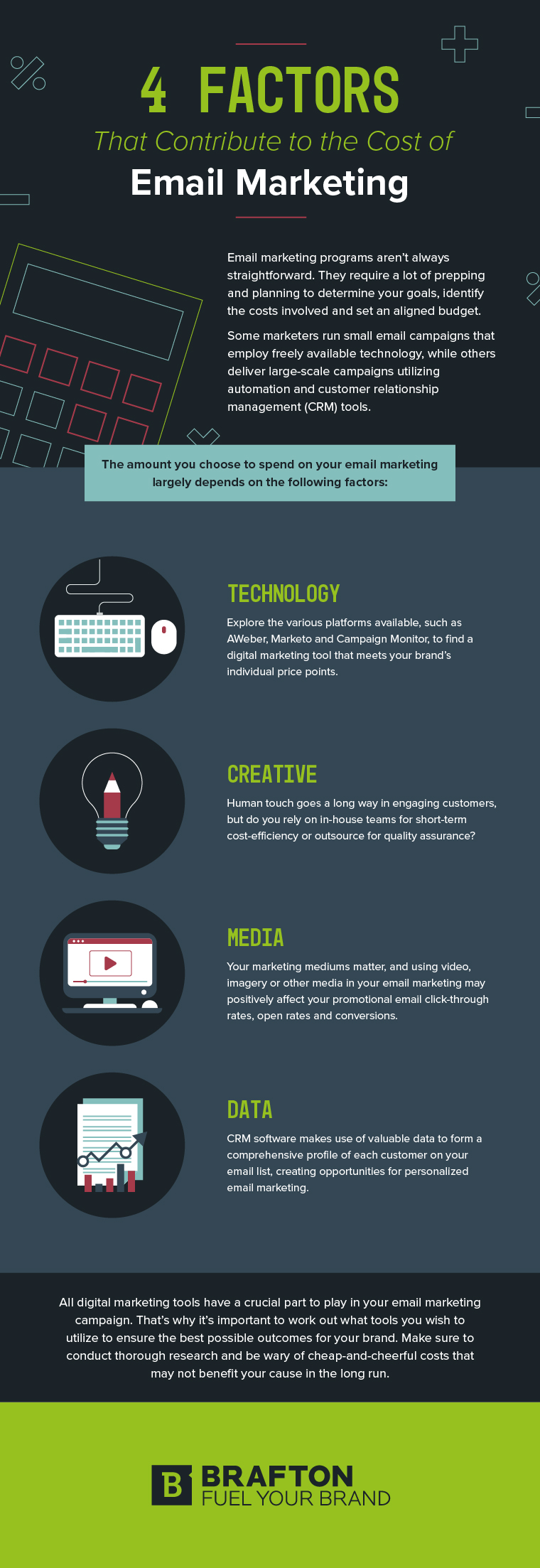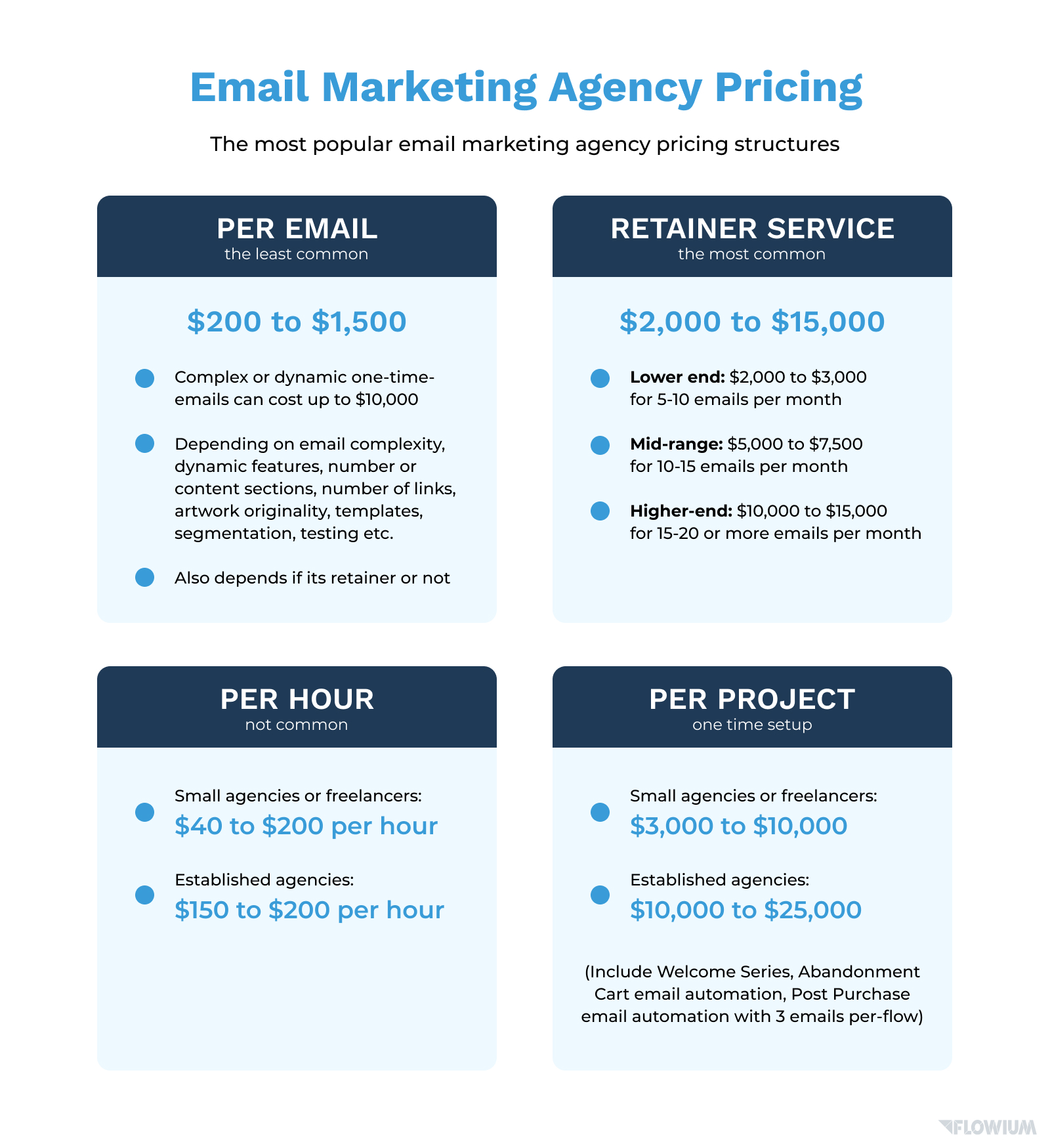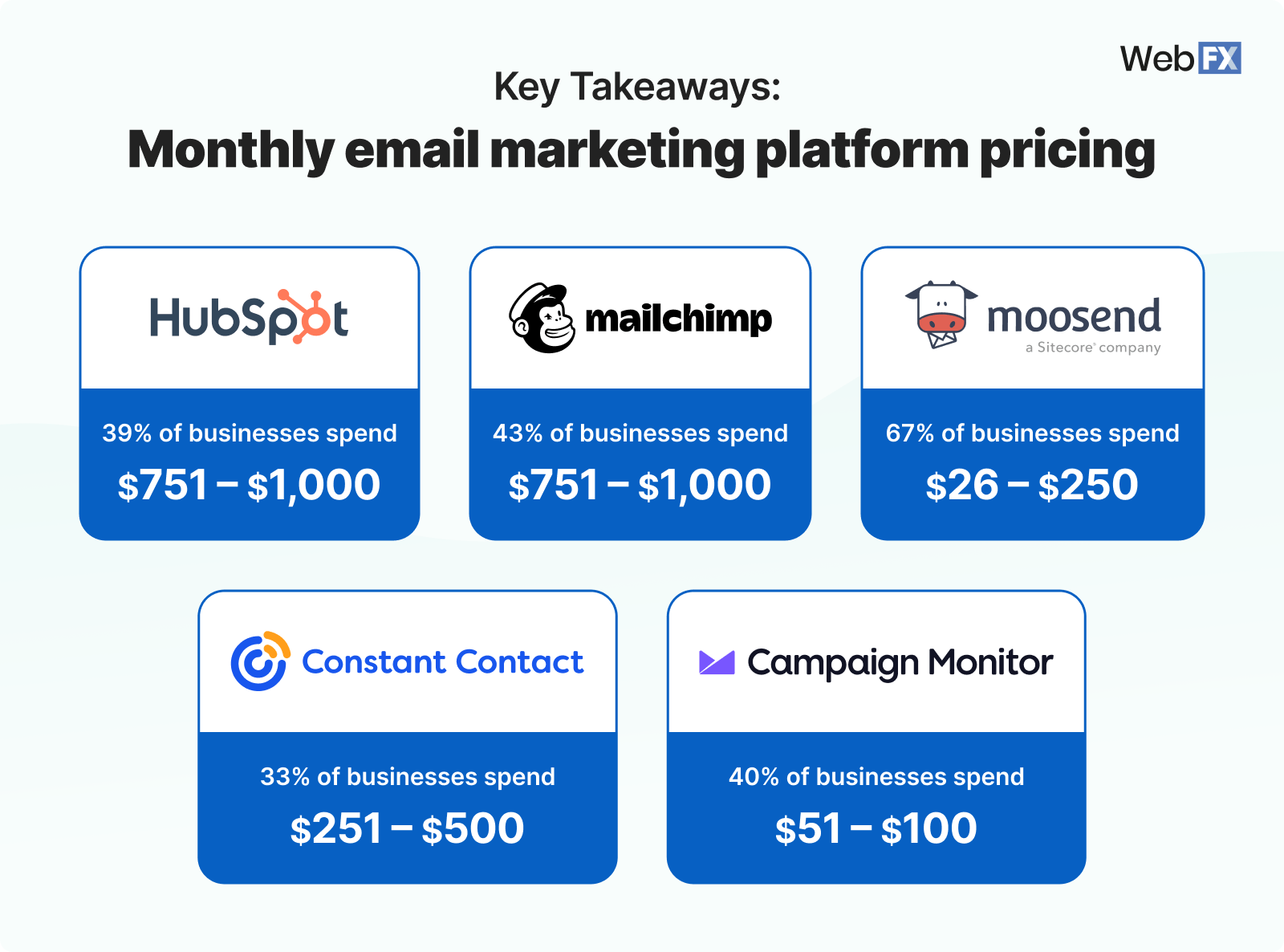Email marketing remains a powerful tool for businesses. It’s cost-effective and reaches a wide audience.
But, have you ever wondered about the cost of each email? The cost of email marketing varies. It depends on factors like the size of your email list, the email platform you use, and the type of emails you send.
Some costs are fixed, while others fluctuate based on your needs and strategies. Understanding these costs is crucial. It helps in budgeting and maximizing your return on investment. In this blog post, we will explore the different elements that contribute to the cost per email in email marketing. This will give you a clearer picture of where your money goes and how to optimize your spending. Let’s dive in and break down the costs for you.
Introduction To Email Marketing Costs
Email marketing is a powerful tool for businesses. It helps engage customers and drive sales. But how much does each email cost? Understanding email marketing costs is crucial for budgeting and strategy.
Importance Of Cost Analysis
Analyzing costs helps you allocate resources effectively. It ensures you get the best return on investment (ROI). Knowing the costs can prevent overspending. It allows you to compare different email marketing services. This helps in making informed decisions.
Basic Cost Components
Several components contribute to email marketing costs. Let’s break them down:
- Email Service Provider (ESP) Fees: Most ESPs charge based on the number of subscribers or emails sent.
- Design and Content Creation: Costs for designing templates and creating engaging content.
- Automation Tools: Fees for tools that automate email campaigns.
- Analytics and Reporting: Some services charge for detailed analytics and reporting features.
Here is a table summarizing these components:
| Component | Description | Typical Cost |
|---|---|---|
| Email Service Provider (ESP) Fees | Charges based on subscribers or emails sent | $10 – $500+ per month |
| Design and Content Creation | Costs for designing templates and content | $50 – $500+ per email |
| Automation Tools | Fees for automation features | $20 – $200+ per month |
| Analytics and Reporting | Fees for detailed analytics | $10 – $100+ per month |
By breaking down these components, you can better understand where your money goes. This helps in optimizing your email marketing strategy.

Credit: www.brafton.com
Fixed Costs In Email Marketing
Email marketing is cost-effective. Yet, there are fixed costs to consider. These costs ensure your campaigns run smoothly and effectively. Let’s explore the fixed costs in email marketing.
Software And Tools
The most significant fixed cost is email marketing software. This software helps you design, send, and track emails. Popular choices include Mailchimp, Constant Contact, and Sendinblue.
These tools offer different pricing plans. Basic plans are affordable, ranging from $10 to $30 per month. Advanced plans can cost $200 or more monthly. Here’s a quick comparison:
| Software | Basic Plan | Advanced Plan |
|---|---|---|
| Mailchimp | $10/month | $299/month |
| Constant Contact | $20/month | $95/month |
| Sendinblue | $25/month | $65/month |
Other tools might also be necessary. These include design tools like Canva or stock photo subscriptions. These costs vary but usually start at $10 per month.
List Building Expenses
Building an email list involves costs. These costs vary based on your strategy. Common expenses include:
- Lead Generation Tools: Tools like OptinMonster help capture emails. Costs start at $9 per month.
- Landing Page Builders: Tools like Leadpages or Unbounce create effective landing pages. Prices start at $25 per month.
- Content Creation: Hiring writers or designers to create engaging content. Freelancers charge $50 to $100 per hour.
Investing in high-quality content is crucial. It attracts and retains subscribers. Additionally, you might need to run ads. Platforms like Facebook or Google Ads help grow your list. Ad costs vary based on your budget and audience. Small businesses often start with $100 to $500 monthly.
These fixed costs ensure your email marketing efforts succeed. They enable you to create, send, and track effective campaigns.
Variable Costs In Email Marketing
Email marketing is cost-effective. Yet, there are variable costs to consider. These costs can fluctuate based on campaign needs. Understanding these can help manage your budget better.
Design And Content Creation
Creating engaging emails involves design and content creation costs. You may need to hire a graphic designer. They ensure your emails look professional and appealing. The cost of a designer varies. It depends on their experience and your project’s complexity.
Content creation is another significant cost. A skilled copywriter can craft persuasive messages. This ensures your audience takes action. Copywriter fees differ based on expertise and project scope. Sometimes, you might also need to purchase images or videos. These enhance the visual appeal of your emails.
Campaign Execution
Executing an email campaign involves several costs. Email service providers (ESPs) usually charge based on the number of subscribers. Larger lists cost more to manage. You may also need tools for A/B testing. These help optimize your campaigns for better results.
Automation tools are another expense. They streamline sending and segmenting emails. This ensures your messages reach the right audience. Analytics tools can add to the cost too. They provide insights into campaign performance. With these tools, you can track open rates, click-throughs, and conversions.

Credit: flowium.com
Hidden Costs To Consider
When calculating email marketing costs, it’s easy to overlook hidden expenses. These hidden costs can impact your budget more than you think. Let’s explore some of the most significant hidden costs to consider.
Compliance And Legal Fees
Ensuring your email campaigns comply with laws is critical. Failing to comply can result in hefty fines. Here are some common compliance costs:
- GDPR compliance for European recipients
- CAN-SPAM Act requirements in the United States
- CASL regulations for Canadian recipients
Each of these regulations requires specific actions and documentation. Hiring legal experts to navigate these laws adds to your costs. Ignoring compliance can be more costly than taking the right steps upfront.
Opportunity Costs
Email marketing demands time and resources. This time could be used for other tasks. Here’s how opportunity costs can add up:
- Time spent designing and writing emails
- Time spent analyzing campaign performance
- Time spent segmenting and managing lists
Each hour spent on email marketing is an hour not spent on other activities. This can include product development, customer service, or other marketing efforts. Balancing these tasks is essential for business growth.
Calculating The Cost Per Email
Email marketing can be cost-effective, but understanding the cost per email is crucial. Calculating this cost helps you manage your budget and measure your marketing efforts. It involves breaking down various expenses related to sending emails. Let’s explore how to calculate the cost per email.
Cost Breakdown Formula
To find the cost per email, use a simple formula. Divide the total cost by the number of emails sent. Here’s the formula:
Cost Per Email = Total Cost / Number of Emails Sent
Total cost includes all expenses. These may be software fees, design costs, and labor.
Examples And Scenarios
Consider an example where your total email marketing cost is $500. If you send 10,000 emails, the cost per email is:
Cost Per Email = $500 / 10,000 = $0.05
Another scenario: your total cost is $1,000, and you send 20,000 emails. The cost per email is:
Cost Per Email = $1,000 / 20,000 = $0.05
These examples show how to calculate and understand the cost per email. This helps you plan and optimize your email marketing strategy.

Credit: www.webfx.com
Measuring Roi In Email Marketing
Email marketing can be a cost-effective way to connect with your audience. But it’s crucial to understand the return on investment (ROI) of your campaigns. Measuring ROI helps you know if your efforts are paying off. Let’s dive into some key aspects of measuring ROI in email marketing.
Key Performance Metrics
To measure ROI, you need to track specific metrics. These metrics provide insights into how well your email campaigns perform.
- Open Rate: The percentage of recipients who open your email. A high open rate means your subject line is effective.
- Click-Through Rate (CTR): The percentage of recipients who click on links within your email. A high CTR indicates engaging content.
- Conversion Rate: The percentage of recipients who take a desired action, like making a purchase. This shows the effectiveness of your email.
- Bounce Rate: The percentage of emails that couldn’t be delivered. A high bounce rate could harm your sender reputation.
- Unsubscribe Rate: The percentage of recipients who opt-out from your email list. A low rate is ideal.
Roi Calculation Methods
Calculating the ROI of your email campaigns involves comparing the revenue generated to the costs incurred.
A simple formula to calculate ROI is:
ROI = (Revenue - Cost) / Cost 100Here’s a breakdown:
- Revenue: The total income from your email campaign. This includes sales, sign-ups, or other goals.
- Cost: The total expense of your email campaign. This can include software, design, and any other related costs.
For example, if your campaign generates $1,000 in sales and costs $100, your ROI is:
ROI = ($1,000 - $100) / $100 100 = 900%A positive ROI means your campaign is profitable. A negative ROI indicates a need for improvement.
By understanding these metrics and calculation methods, you can optimize your email marketing strategy. This ensures better performance and higher returns.
Strategies To Optimize Costs
Email marketing can be cost-effective. But, without proper strategies, costs can rise. To keep costs low, focus on automation, segmentation, and targeting. These strategies can help optimize your budget. Let’s explore these methods.
Automation And Efficiency
Automation tools can save time and money. They handle repetitive tasks. This reduces manual work. Here are some key benefits:
- Time-saving: Automation sends emails at the right time.
- Personalization: Automated emails can be personalized.
- Consistency: Automation ensures consistent communication.
Use tools like Mailchimp or Sendinblue. They offer features for automation. These tools streamline your email marketing.
Segmentation And Targeting
Segmentation divides your audience into groups. Targeting sends relevant emails to each group. This increases engagement and reduces costs. Here’s how:
- Identify: Gather data on your audience.
- Segment: Create groups based on behavior or interests.
- Target: Send tailored emails to each group.
For example, segment by purchase history. Send product recommendations to previous buyers. This improves open rates and conversions.
Here’s a simple table for quick reference:
| Step | Description |
|---|---|
| Identify | Gather data on your audience |
| Segment | Create groups based on behavior or interests |
| Target | Send tailored emails to each group |
Segmentation and targeting reduce unnecessary costs. They ensure your emails reach the right people.
Real-life Case Studies
In the world of email marketing, understanding real-life case studies can help you determine the cost-effectiveness of your campaigns. These case studies reveal key insights and provide actionable data. They show the real impact of email marketing, beyond theoretical analysis.
Successful Campaigns
Company A, a small e-commerce business, ran a holiday email campaign. They sent 10,000 emails at a total cost of $500. The campaign generated $5,000 in sales. This means each email cost 5 cents and earned 50 cents in return. This is a tenfold return on investment.
Company B, a large retail chain, sent out a series of weekly newsletters. They sent 100,000 emails each week, with a total cost of $5,000. Over a month, they saw $50,000 in sales. Each email cost 5 cents and earned 50 cents. This consistency helped maintain customer engagement and loyalty.
Lessons Learned
From these case studies, we learn that targeted email marketing can be highly cost-effective. Low-cost campaigns can yield substantial returns if executed well. Focusing on the right audience is key.
Personalization also plays a significant role in campaign success. Tailored content increases engagement rates. Customers feel valued when emails address their specific needs.
Another lesson is the importance of regular communication. Consistent emails keep your brand in the customer’s mind. This boosts loyalty and repeat sales.
Future Trends In Email Marketing Costs
Email marketing costs are evolving. Future trends are shaping these costs. Understanding these trends is vital. Businesses can plan better. They can allocate budgets effectively.
Technological Advances
Technology impacts email marketing costs. New tools improve efficiency. Automation reduces manual tasks. Advanced analytics offer deeper insights.
- AI-Powered Tools: AI helps segment audiences. It personalizes emails. This boosts engagement.
- Automation: Automated workflows save time. They also reduce costs.
- Advanced Analytics: Analytics track performance. They optimize campaigns. This leads to better ROI.
Technological advances can lower costs. They streamline processes. They also enhance effectiveness.
Evolving Consumer Behavior
Consumer behavior is changing. This affects email marketing. Understanding these changes is crucial.
| Trend | Impact on Costs |
|---|---|
| Mobile Usage | Email designs must be mobile-friendly. This can increase design costs. |
| Privacy Concerns | Compliance with privacy laws is essential. It can add to costs. |
| Personalization | Consumers expect personalized content. This requires more data. Data collection and analysis can be costly. |
Adapting to consumer behavior can be challenging. It may increase costs. But it also improves engagement. This can lead to higher returns.
Conclusion And Takeaways
Email marketing is an effective tool for businesses. Understanding the costs involved is crucial. This section offers a conclusion and takeaways from our discussion on email marketing costs. We will explore key insights and actionable tips to help you optimize your email marketing strategy.
Key Insights
Here are the main points to remember:
- Email marketing can be cost-effective.
- Costs include software, design, and content creation.
- Analyzing ROI is essential for budget allocation.
Consider these factors to manage your email marketing budget effectively.
Actionable Tips
Use these tips to improve your email marketing strategy:
- Choose a cost-effective email marketing platform.
- Invest in quality content creation.
- Regularly analyze campaign performance.
- Segment your email list for better targeting.
- Use A/B testing to optimize emails.
Implementing these tips can reduce costs and increase efficiency.
Frequently Asked Questions
How Much Does An Email Cost In Email Marketing?
The cost per email varies. It can range from $0. 01 to $0. 05.
What Factors Affect The Cost Of Email Marketing?
Factors include email volume, software choice, and list size. Design and content also matter.
Is Email Marketing Cost-effective?
Yes, it is. Email marketing often has a high return on investment (ROI).
How Do I Reduce Email Marketing Costs?
Use automation tools, segment your list, and create engaging content to reduce costs.
Are There Free Tools For Email Marketing?
Yes, many tools like Mailchimp offer free plans for small lists.
Conclusion
Email marketing costs vary. Understanding each element helps control expenses. Analyze your email strategy. Focus on optimizing costs while maximizing impact. Evaluate tools and services regularly. Stay within budget. Effective email campaigns don’t have to be expensive. Small adjustments can save money.
Consistent monitoring ensures cost-efficiency. Keep learning and adapting. This approach leads to better results. Happy emailing!


Leave a Reply